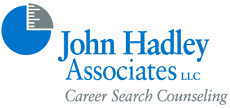Building Influence In Interviews
From Career Tips, 2014 Volume 7, July 2014

I started part 1 of this series by sharing my definition of the goal you should have for any conversation where you want to achieve true influence:
"To help the other person succeed by producing a solution that best meets their needs."
Notice that this statement includes NOTHING about what you want to achieve. It is entirely focused on THE OTHER PERSON. Your goals need to take a back seat to helping others with their needs.
A clear focus on the other person's goals builds the relationship so critical to achieving influence.
Last time I focused on how this applies to networking conversations and meetings, and only started to touch on interviews. Now let's dive into those more deeply.
Many candidates struggle with applying the concept above to interviews. They think, "I'm here about getting hired - I just want to get an offer!"
True, but the path to getting that offer is a deep exploration of the interviewer's needs, that ultimately shows how you could be the solution that best meets those. (Or possibly to finding out that the needs are ones for which you either can't or don't want to be the solution, which can also be a valuable outcome.)
Consider these true life situations:
Rich had the best possible credentials and experience I could have hoped for in my critical opening, but the instant I met him, I realized I would be cringing every time he walked into my office. Since I had flown him in from Boston, I went through the motions of the interview process, but knew I would not extend him a job offer. In fact, others who met him suggested I should have just put him back on the plane right away.
David was a number of years Rich's junior, and was light in the type of experience I sought, but the recruiter told me he was sharp, and I decided it was worth exploring his candidacy. I instantly liked him and the way he carried himself. As we talked, I became confident that he would fit well into my team and always have my back. I decided I could mentor David on his gaps, adjusted the job spec to fit him, and hired him on the spot.
How do you achieve David's level of engagement? By aiming towards the objective I stated up front.
Exploring my needs shows you are curious, engaged, and focused on the right issues. You will be asking the right questions, talking about things that are relevant and important to me, and keeping ME fully engaged in the conversation. Digging deeply into those areas, and not letting things lie at the surface, gains you the understanding that shows you what it is that the job is REALLY about, and provides you the roadmap to showing that you are the solution that best meets my needs.
Notice that I referred to the interview above as a conversation. The most successful interview is not a Q&A session, but morphs into a truly influential conversation.
The trick is that this focus on my needs has to be genuine: you can't just be asking a set of questions you wrote down on a piece of paper ahead of the interview. If your questioning comes across like stock questions you read about in some book, you will likely do worse than if you asked no questions at all.
You need to be genuinely interested in the questions, and my answers. You need to be following the conversation so that the questions are natural and relevant to the point under discussion. You need to be thinking deeply about my answers to see where the conversation should go next.
Part of this involves tension management, a concept few people consciously apply to the interview process.
We'll dive into the interview further next time, and in the meanwhile, contact me with your feedback and questions on the first 2 parts.
(Click here to continue with the final part of this series.)
